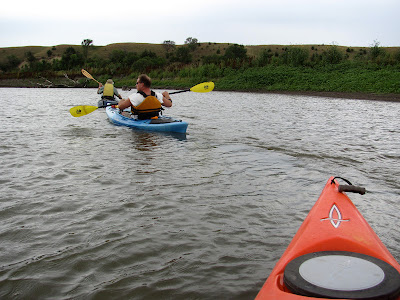This blog is designed to highlight the paddling opportunities within South Dakota, mainly within a 50-mile radius of Sioux Falls. While Sioux Falls is far from the adventure of coastal regions, there is a certain satisfaction in utilizing the available waterways to observe weather, water conditions, and the landscape along the shoreline. In addition, there is a wealth of animal life on the waters of small South Dakota lakes, rivers, and creeks, including geese, ducks, pelicans, great blue heron, egrets, hawks, owls, perching birds, deer, raccoons, and beaver. Eagles, fox, and coyote are also sometimes spotted.
The sites described are places where I have kayaked over the past few years, mostly in South Dakota but sometimes including locations in Iowa and Minnesota. One of the best sources of information on the accessibility of small lakes is the South Dakota Atlas and Gazetteer, the large map book of South Dakota. Lakes with a public access are generally identified by a boat symbol marking the location of a launching site on public land.
You will notice the menu of paddling locations on the right side of the blog. Each of the postings is linked to one of the areas, and my intention is to provide a continuing review of the places where I paddle. Perhaps these narratives will help readers select waterways of interest to them. Please feel free to offer a comment regarding any of my postings; I would welcome the dialog.
I also maintain a companion blog that describes hiking opportunities within the Sioux Falls area. You can access that blog at: http://hikingsiouxfalls.blogspot.com
Tuesday, August 28, 2012
Lake Alvin and Nine Mile Creek - Late Summer
Tuesday, August 14, 2012
Clear Lake (Minnehaha County) Cruise
Sunday, August 12, 2012
The James River and Assault by Asian Carp
With the imperceptible flow of the river, we were all continuously paddling. The anxiety of anticipating the carp and long paddle left us all quite tired by the end.
For those interested in the full set of photographs of this cruise, please go to my Flickr account at the following URL: http://www.flickr.com/photos/jayheath/sets/72157631025942498/
Wednesday, August 08, 2012
Big Sioux River: Brandon-to-Brandon
For those interested in the full set of photographs of this cruise, please access my Flickr account at the following URL:http://www.flickr.com/photos/jayheath/sets/72157630973893006/detail/




















































